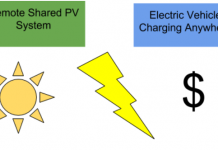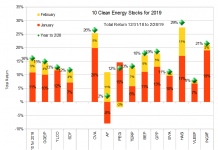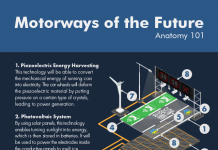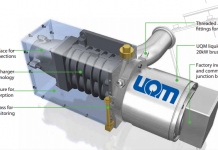John Petersen
Later this month, Tesla Motors plans to launch its initial public offering and sell about 12% of the company for $200 million. If the IPO is successful, Tesla’s stock will trade on the Nasdaq Stock Market (TSLA) and its initial market capitalization will be roughly $1.5 billion. Since the IPO has spawned a series of analytical articles from better writers, I’ll avoid the temptation to analyze the deal terms and focus on product issues instead. Like their cars, Tesla’s IPO will undoubtedly attract vanity investors, the philosophically committed and the mathematically challenged. The more cautious element will probably stay on the sidelines.
Calling Tesla an automaker is like calling France’s très chic Louis Vuitton, Möet Hennesy Group (LVMHF.PK) a beverage company. Tesla started with a $100,000 roadster in 2008 and has sold 1,063 cars to date. They plan to add a $50,000 family sedan in 2012 and have booked approximately 2,200 reservations over the last year. As a reference point, the star-crossed Delorean Motor Company sold about 9,000 stainless steel gull-wing sports cars for $25,000 (roughly $60,000 current dollars) in 1981 and 1982.
There will always be a market for vanity goods, particularly in the green space where eco-bling is hard to find. Moving down market will be a major challenge, however, because real consumers live in a world of paychecks, stressed budgets and overwhelming economic uncertainty. So while the eco-bling crowd will pay any price for the right status symbol, real consumers tend to think the green in their wallets is more important than the green in their cocktail party conversation. When people seriously consider their transportation needs and put pencil to paper, EVs will always fall short of the mark.
In a conventional car with an internal combustion engine, or ICE, the fixed cost of the fuel tank is insignificant and the variable cost of gasoline is high. In an electric car the dynamic is reversed. The fixed cost of the battery pack is immense and the variable cost of electricity is low.
At current US gasoline prices of $3 a gallon, an ICE that gets 30 mpg has a fuel cost of $0.10 per mile. At EU prices of roughly $6 a gallon, the fuel cost is $0.20 per mile. These numbers will move up and down with fuel prices and are certain to increase over time as oil prices climb, but they won’t change because of an individual owner’s driving habits.
In an EV, the cost calculation is more complicated because there’s a capital cost for the battery pack that must be recovered over a period of years and a variable cost for the electricity.
The appropriate cost recovery period is always a thorny issue with EV evangelists claiming that the goal should be breakeven over the life of the car and consumer surveys indicating that three years is the preferred breakeven period. Since no single number will please everyone, I’ll default to IRS regulations that require businesses to depreciate cars and light trucks over a maximum of five years, and to new car loans, which commonly run for five years. Five years is probably not a perfect number, but it’s more reasonable than either of the extremes.
The Wall Street Journal recently reported that Nissan’s cost of making a 100-mile battery pack for the Leaf is about $18,000. By the time you add Nissan’s normal 25% markup, the retail price should be about $24,000, or $1,000 per kWh. In spite of the facts, many readers believe $500 per kWh battery packs will be a reality within a couple years. Since I’m weary of arguing the reasonableness of those assumptions, I’ll use both a $1,000 and a $500 per kWh pack price for this article.
I’ll also use a number of other charitable assumptions including stable electric costs of $0.12 per kWh, no loss of battery capacity over time and no cycle-life limitations. While I cringe when reading discussions of second-life value because (a) nobody’s demonstrated a 10-year first-life in the real world, and (b) I don’t believe a buyer in 2020 will pay more than scrap value for a battery based on 2010 technology that’s already logged a decade of service under unknown operating conditions, I’ll assume a 15% second-life value to keep the peace.
The following graph presents alternative gas price scenarios of $3, $6 and $9 per gallon, and then overlays depreciation and charging cost curves for an EV with a 25 kWh battery pack priced at $1,000 and $500 per kWh. The solid bold lines show current gas and battery prices. The dashed lines show possible futures that are uncertain as to both timing and magnitude.

The most striking feature of this graph is the shape of the curves. Where prevailing mythology holds that EVs will be wonderful for urbanites with short commutes who don’t need much range flexibility, the curves show that the best value will be derived by high-mileage drivers who presumably need far more range flexibility. The reason is simple. Spreading battery pack depreciation over 5,000 or even 10,000 miles a year results in a higher cost per mile than spreading that depreciation over 20,000 or 25,000 miles a year.
The bottom line is that EVs are only economical when you buy no more battery than you need and you use the battery pack heavily. That leads to a life and death struggle between range anxiety and affordability. When you factor in the other uncertainties, I believe plans to electrify passenger cars are doomed until gas prices increase substantially or battery costs fall substantially. While I think both are virtual certainties over the next decade, I don’t believe either is likely in time to make Tesla a business success.
Disclosure: None









Just to clarify – is the X axis of your graph miles driven per year?
I’ve redone the graph to add axis descriptions. Thanks for the catch.
I think this is a great article but you are missing a key issue for people that can afford this type of car. I can buy a model S that only a few people have, or a Mercedes that several people have. Who cares about what’s under the hood it’s a 60K car. It’s just as fast, and just as luxurious as a Mercedes, but few people will have it. That makes it Coooooool. American markets are ruled by cooooool!
Not to mention…
I get to drive in the carpool line by myself.
I has 2 Trunks.
And an iPad style console.
I can just think of all the ladies I’m going to pickup in it right now LOL!! j/k… not realy :-p
A fool and his money are soon parted and there will undoubtedly be customers who buy for exactly the reasons you suggest – especially the picking up ladies part. The question remains, will there be enough of them for Tesla to earn a profit?
John,
I feel like it’s fairly public domain that LG is offering packs in the $400/kWh range for 2013 delivery. That’s price, not cost. Obviously, there’s much further to run on the cost curve especially as some of components of the cells/packs that are currently over-engineered (e.g., separators, cooling systems) are scaled back.
Ben
2013 is a long way off and news stories are far from reliable. If LG’s put out a firm price list, I’d appreciate a link.
Nice phrase: “That leads to a life and death struggle between range anxiety and affordability.”
Good analysis, but in addition to the other generous assumptions factored in it seems that you:
1) don’t consider the time value of money
and
2) compare the Leaf to a larger ICE
If we assume a 5% interest rate (a generous assumption for a battery), the price per mile goes from $0.19/mile to $.25/mile.
Then for the ICE, when apples to apples comparisons are made such as Prius ICE vs. Prius all electric or RAV4 ICE versus RAV4 EV, the ratio of mpg to mpkwh is generally about 10.
This is a critical factor that I see fudged in a lot of EV comparisons. You can’t give the battery credit for choosing a smaller, more fuel efficient car. It’s literally like comparing a Geo Metro to a Honda Accord.
A Leaf that gets 4.2 mpkwh (yeah, right) is the equivalent of an ICE that gets 42 mpg, only the Leaf has with much less range.
Making these two adjustments but leaving all of the other generous assumptions in place, driving the Leaf 12,500 miles a year is like paying $10.60 per gallon of gas.
It’s hard to imagine driving much more than the 12,500 average in a car with a 100 miles range and if you use it more for short trips and drive 7,500 miles per year, then it’s like paying $16.86 per gallon.
If I make a more realistic assumption of a 7 year battery life (as GM does with the Volt using extremely conservative battery management), then the effective price per gallon becomes and $22.10 and $13.74 for 7,500 and 12,500 miles/year respectively.
Those super-green Tesla drivers are paying the equivalent of over $30 per gallon if they drive less than 7,500 miles per year or 72 cents a mile. They’d be better off hiring a rickshaw driver.
-Mercy
Given my druthers I’d use an analytical format like you did. Knowing that I’m writing for a crowd that goes from simple street investors to high end money managers, I’ve found the simple assumptions are easiest to understand and complexity only makes a bad economic case worse.
@John Re: a fool and his money…
Tesla Investing Fools: Google Founders, Daimler ($40 mil), Toyota ($50 Mil.), You (Tax Payer money invested in Tesla $546 Mil.)
The Model S is worth every penny.
Not to mention it’s a great way to tell BP (Brown Pelicans) and all their middle eastern friends to go F themselves… That doesn’t sound foolish. That sounds like national security.
@John:
Obviously there’s no published price list – that’s not how the auto industry works. I won’t waste breath trying to convince you – ask Tom Granville at Axion. He has some solid former Li+ guys working there that will know pricing and agree w/ me.
As for 2013 being a long way away, that’s when the models being developed now are going to be hitting mainstream sales, so if we’re analyzing cost curves, we should be focused on that time period. Anything sold before then will be to early adopters to whom a cost analysis is unimportant.
One does not need a price list when he can go to the SEC reports for A123, pull the cost of products sold and the watt-hours shipped numbers from the financial statements and calculate a hard average cost per watt hour for the period.
Press releases are interesting. SEC filings are informative.
There is an immense gulf between the current cost of products from existing factories and the forecasted cost of products from non-existent factories. The former is generally a reliable number. The latter is generally an educated guess that includes a lot of hope and aspiration.
My experience over 30 years of practice is that forecasts are always wrong; development paths are always longer and more expensive and savings always fall short of the mark.
I have no doubt that $500 per kWh will be achievable by 2020. But believing it will happen by 2012 or 2013 would be a massive triumph of hope over experience and I can’t get there.
I wish every battery developer the best of luck in all their endeavors. But hope is not an investment strategy.
> Given my druthers I’d use
> an analytical format like you did.
No, I liked your format and graph, I just think you should:
1) change the ICE comparison mileage from 30 mpg to 42 mpg and
2) change the interest rate from 0% to 5%.
The additional information was just to provide more detail on my thinking.
-Mercy